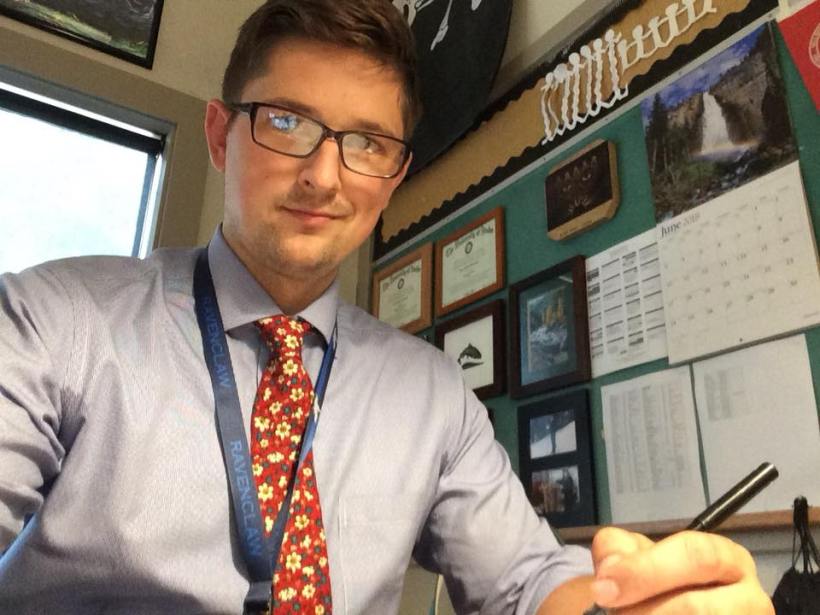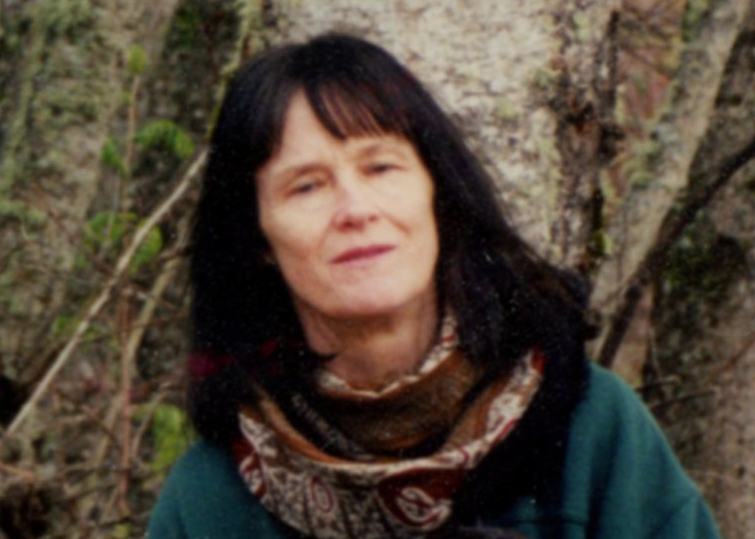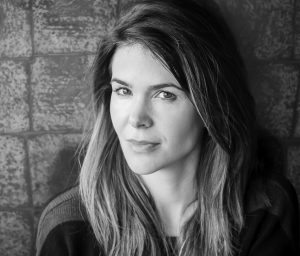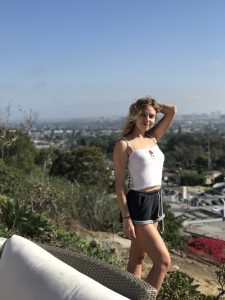Three Essays
The Day Kylie Jenner Became the Youngest Self-Made Billionaire
“Hi. I’m calling back from
Student Counseling Services.
Is this Rachel?” I turned the
volume up on my phone
because two men next to me
on the train were talking
loudly about how Kylie Jenner
wasn’t “self-made.” I gave the
lady on the phone my informa
-tion and she told me I would
be put on the waitlist. I guess I
wasn’t the only sad, anxious
student at my school who
needed help with their mental
health. The news made my heart
sink. The last time I was waitlisted,
my mental state went from bad to
writing suicide notes. She told me
to have a good day and hung up.
The men on the train continued to
fill the otherwise silent, morning
air with their opinions.

“Okay your copay fee for
your birth control consultation
is going to be $80, is that okay?”
The waiting room felt stale. I
knew it wasn’t Planned Parent-
hood’s fault that my insurance
charged too much, but it still
stung. It ached when I texted my
dad and asked to borrow money
and prayed we would not have
the awkward conversation about
why I needed the money. My
phone’s notifications lit up that he
sent the money¾he always does.
Another notification in my dock
was a tweet with the Forbes article
about Kylie. My fingers burned as I
transferred money from my savings
account to my checking. I would pay
him back with my next paycheck.
“Girl, your lipstick looks so good!
I could never pull that off, could I?”
The lady at the payment counter
was referring to the dark brown
color I had painted on my lips. I
thanked her and told her of course
she could pull it off too. She rolled
her eyes and smirked as she took
my debit card out of my shaking
hands. The fact that I worked part-
time at a makeup store somehow
came up. She asked if I had tried the
Kylie lip products and I hadn’t. They
sold them at the store I worked at,
but I refused to buy them and
help Kylie become a billionaire. At
least that’s what I told my coworkers,
when in reality, I just couldn’t afford
it. Looks like Kylie didn’t need my
help though.

“How do you all think
consumer culture has
changed in the last 100
years?” My 1920’s history
class was always awkward
with one opinionated student
talking like a God. A biracial
girl and I were some of the
most “ethnic” people in the
class and I didn’t get her. She
often compared the plight of
being biracial nowto a black
person in the 1920’s, which I
never thought was a fair com-
parison. She started going on a
tangent about how Kylie Jenner
created an empire off lip
injections. That she marketed it
as something you could achieve
with a little lip liner. While I
agreed with her, I wondered if
anyone would have been
complaining about Kylie’s success
if she was a man.
“Rachie! I need you to get two
people to sign up for credit cards
tonight! You up for it?” I nodded
at my manager and ignored the
awful nickname she gave me. She
squealed as she turned on her heels
to continue watching people she
thought were stealing. It’s not
uncommon for big retail companies
to ask their customers to sign up for
a credit card, but it felt wrong and
saturated with capitalism. A middle-
aged woman came up to my register
with a few Kylie Cosmetic “Lip Kits”
in hand. Her delicate fingers threw
the $29 products on the counter. I
scanned them and informed her
about the in-store credit card. She
interrupted me before I could finish
my half-assed sales pitch and told me
she didn’t need it. Then her card got
declined.

This is so sweet. But why am
I crying? I sent this tweet to my
friends followed by a video from
my hometown. Though every
tweet on Twitter was either
trashing or praising the Jenner/
Kardashian empire that day, there
was a video on there that made me
cry. A basketball player on the team
for the university in my hometown
got a surprise visit from his mom,
who he hadn’t seen in two years
since he left the Dominican Republic.
My eyes overflowed with tears as the
six-foot tall young man sobbed in
disbelief as his mother walked down
the stairs of the empty stadium to
greet her son. I’m not a big sports
person, but it was magical to see his
mom glowing as she got to watch her
son play. Haven’t we gone over this?
Self-made: Having succeeded in life
unaided.
Dictionary.com’s twitter account sent
that message the day after. Even the
damn dictionary doesn’t think Kylie is
deserving of her title. While it was
petty, it made me laugh when I saw it
on my feed. As I walked down a stair-
well, having left class, I saw I had two
notifications. One from Chase, that my
minimum wage paycheck was directly
deposited into my account. It wasn’t
much, but it was enough to pay rent
and pay my dad back. The other one
was an email from Counseling Services.
They sent the list of available times for
an intake appointment for the following
week. I was off the waitlist and my
shoulders didn’t feel as heavy any longer.

The day Kylie Jenner became a
billionaire seemed to be the topic on
everyone’s minds. Was it because she
came from a family of millionaires so
the term “self-made” left a bad taste in
everyone’s mouth? Or did she truly
work hard and deserve the title? Does
it really matter? I imagine on that day,
Jenner sat in her Hidden Hills mansion
with her collection of sports cars asleep
in her garage. I imagine a fresh manicure
and a set of long acrylics glued to her
nails as she holds her baby daughter in
her arms. Her child has no idea of the con-
troversy and comments her creator has
caused. Kylie pays little attention to the
explosion of notifications on her phone.
She only enjoys the company of the storm
she created.
Origins
5 years old. Leander, TX.
I was wrapped in a beach towel sitting on the edge of the pool. I traced circles with my feet as they dangled in the cool water, and squinted to see from the bright sun while laughing at my family who swam nearby. As I looked down at the small waves I was making, I noticed how dark my legs were in comparison to the bright blue waters that surrounded them. My bright pink towel and swimsuit only seemed to amplify the contrast. I thought my legs looked like hot dogs without buns. My sister, Caitlin, called over to me, saying something about how crazy my hair looked. It was a lot thinner and curlier back then, so when it dried, I looked like a discount, brown Annie. Her smile beamed as everyone laughed at whatever she said. Like always, I ran off crying because I didn’t know how to take a joke. The laughter of my family rang in my ears as my sister tried to call me back over, so I wouldn’t go tell mom.
My brown-ish feet took me back across the hot concrete, up the deck, and into the kitchen. The inside of the house was completely dark as my eyes adjusted to the indoors. My mom saw me, “Hey lovie, what’s wrong?”
I half-blindly ran over to her and tattled on my sister. She started to laugh and contained it. “Why can’t I look more like Caitlin?” I asked between my tears.
Caitlin got the traits I envied from my dad: fair skin that was decorated with beautiful freckles and golden-brown hair, while I got more similar looks from my mom: easily tanned skin and my mom’s dark, mexican hair. My mom was angered that I complained about my looks because, I guess as far as faces go, my sister and I looked “just like her.” She sent me back outside and I went and sat in the shade, awaiting my sister’s apology that never came.
15 years old. Lubbock, TX.
My arms started to get tired from using my friend’s mini-flat iron to straighten my hair. As I got older my hair lost most of its curl and it became so thick I had to get it thinned out every six-weeks. I was getting ready in my friend Kamryn’s bathroom while the rest of my friends sat down the hall in her room. They were discussing our most recent obsession with a new boy-band. Their laughter echoed down the hall as I yelled at them, cursing at my hair for making me take so long to get ready. Her bathroom was cluttered with all the makeup we borrowed from each other and no one bothered to clean it. The mirror contained my reflection as well as drawings of me and my friends that one of them had drawn with a dry-erase marker. I envied the doodles of my friends that had the hairstyles I wanted, but was told I couldn’t pull it off. I finished the last section and my hair looked just like all of my white friends’ hair¾pin straight.
I ran down the hall and they were all laying across Kamryn’s bed on their phones sending back and forth pictures of the boys in the band that were “our boys.” Rolling my eyes, I reached into my bag to grab my lotion. They continued to gush about the punk boys on their phone screens as I lathered up the lotion and glided it across my skin. I hated the smell of lemons, but I had mixed in lemon juice into my lotion because I had read online that lemon juice made your skin paler. Closing the lid to my lotion, I threw it back into my bag and threw myself onto the bed with my friends. They then showed me the punk band member that was “my guy.” He was really cute but didn’t look like the rest. He had dark hair, small brown eyes and olive-colored skin. The other members of the band were fair and had light colored hair with choppy fringe.
“That one is yours,” Kamryn proclaimed, like she was claiming The New World for me. I pointed out that he was the only one who wasn’t white. They laughed and said that’s why he was mine. I rolled my eyes and joined in their laughter.
19 years old. Chicago, IL.
The world was really dizzy. The girls at the party made a drink called “Jungle Juice” that I had only ever seen on Twitter and didn’t know it was a real thing. It consisted of pouring juice, fruit, and roughly 3 tons of liquor into a large container. Needless to say, I had quite a lot of it. It was a cast party for the show we had just closed earlier that night. It was an all black cast and we were all extremely proud to have sold out every night to share the story with others. I was only the set designer, so I hadn’t really had much time to get to know the cast as much as they did with each other. They all laughed at their inside jokes and broke away from the group to have their own conversations. I sat with another designer and gushed to her about how we needed to hang out. The majority of the party sat around the living room laughing and trying to explain the rules of the drinking game over the loud music playing. I was only half-listening and playing with the soft waves in my hair I had recently started to embrace.
The rules of the drinking game had been something along the lines of drinking if a statement applied to you. For example, if the statement was “whoever has been arrested” or “whoever is the youngest,” the person who that applies to would have to drink. They had started to play a few rounds of the game and I would just drink whenever they told me to. I leaned my head back on the wall behind me and started to sing the words to a Selena song that came over the speakers. I don’t know Spanish so I was probably saying the wrong words, but the music was so loud no one cared. Finally I heard one girl say my name over and over and I looked over at her and tried to make sense of what she was saying. “Rachel, you have to drink now” she yelled over the music. She told me to drink again and I laughed and obliged as I asked why I had to drink. “Because it was ‘whoever is white’” she yelled back. I tried to explain that I was only half white, but that my mom was hispanic. No one heard me over the music, so I kept drinking and we all kept playing the game.
Meditations on the Color Yellow
- I asked my mom what her favorite color was. She told me it was yellow. I made a noise of disgust and asked why. She said it was a happy color.
- My sister walked out in her satin, pink, and silver-beaded prom dress. She had decided the day before her junior prom that she was going to attend and it was the only dress she could find last minute. I was about to tell her she looked like a bottle of Pepto Bismol when she started to let all her friends in the door. I had never seen her friends wear anything but jeans and t-shirts and they filed into our living room like troops ready for battle. The girls all had on full-length gowns and I was in awe of the girl with fair skin and light brown hair with soft curls. Her dress was quite large and a pale yellow that reminded me of Belle, from Beauty and the Beast. So I was confused when I heard someone whisper under their breath that it wasn’t her color.
- My mom tied my hair up in the tightest ponytail¾like she always did. She yanked a brush through my hair like it wasn’t attached to a 5 year-old’s head. I coughed and coughed as she doused my hair in hairspray, and she told me to stop being so dramatic. My hands were laid on my lap and I played with the skirt of my dress to distract me from the pain. The fabric was stiff like parchment paper. It was a white and yellow plaid pattern that had little yellow flowers sewn into the hems. I knew since it was such a light color I wouldn’t be able to play outside with my cousins. As my mom finished the only hairstyle she was capable of putting my hair through, she grabbed a scrunchie off the dresser that was the same fabric as my dress and put it in my hair.
- We sat around the kitchen table having breakfast and my dad yelled at our cat for trying to catch flies that landed on the cracked, yellow-painted walls.
- I walked barefoot down the hospital hall, clinging to the railing meant for the actual sick. My family’s car wreck didn’t do much damage to me, but my seven-year-old body was so sore it hurt to even laugh, though I wasn’t doing much of that. My Aunt Mary saw me coming from the waiting room and greeted me with a relieved sigh¾I think I might have been the first victim of the accident she saw, other than my parents. When I finally made it to the waiting room she handed me a bright yellow Wendy’s bag and told me I needed to eat something. I sat next to my cousin and he asked if I was alright, I might have said yes. Then I threw up into the Wendy’s bag.
- There were baskets that were filled with things no one would normally buy at the raffle contest my neighborhood had. Everyone was putting in their tickets for the basket with candy and DVDs. I put all of mine in a soft-yellow, woven basket filled with jewelry and I won. When I brought it home, my mom kept most of the jewelry because it was “too grown up” for me and told me I could keep the basket.
- My grandma drove to my school to bring an outfit for me to wear to my friend’s dad’s funeral. It was the same dress I had worn to Easter mass¾mostly black with yellow flower petals printed on the bottom half. My seventh-grade class walked from the school over to the church and filed into a pew toward the back. I had never met her dad before. It was the first time when they brought him down the aisle in a coffin. The pamphlets they handed out were a faded beige and felt like napkins. It had his picture on the front and inside there were pictures of my friend and her family. Their smiles were beaming. As they walked in after their dad, my friend and her mom had puffy red eyes and her five-year-old sister’s face was blank.
- My grandmother on my dad’s side was a character to say the least. Garage sales were her nirvana. The last Christmas that she was well enough to mail out presents, she boxed up random items and shipped them out to her relatives across the country. That year my mom got a fake diamond ring in a black suede box (my parents were already separated), my sister got an expired bottle of purple Listerine mouthwash, and I got a shiny, yellow piggy bank with the word “Botox” written across the side in black cursive letters.
- At my confirmation I picked out a yellow lace dress to wear because I was only doing the ceremony for my mom, so I figured the dress could be for her too. Afterward, she didn’t congratulate me on letting the Holy Spirit into my soul, but how nice I looked in yellow.
- My head rested on my first boyfriend’s shoulder as we sat at my best friend’s graduation party. He laughed at something I said and put his hand on my thigh, like it was a pat on the back for me saying something funny. His pale, veiny hand started to slide under the dark yellow fabric of my dress. He smirked as I allowed him to touch me, he didn’t know I just didn’t want to embarrass him by telling him to stop.
- My drunk, but cute friends went around in a circle to decide on what everyone would be, if they were a color. It was unanimous that I would be yellow.







